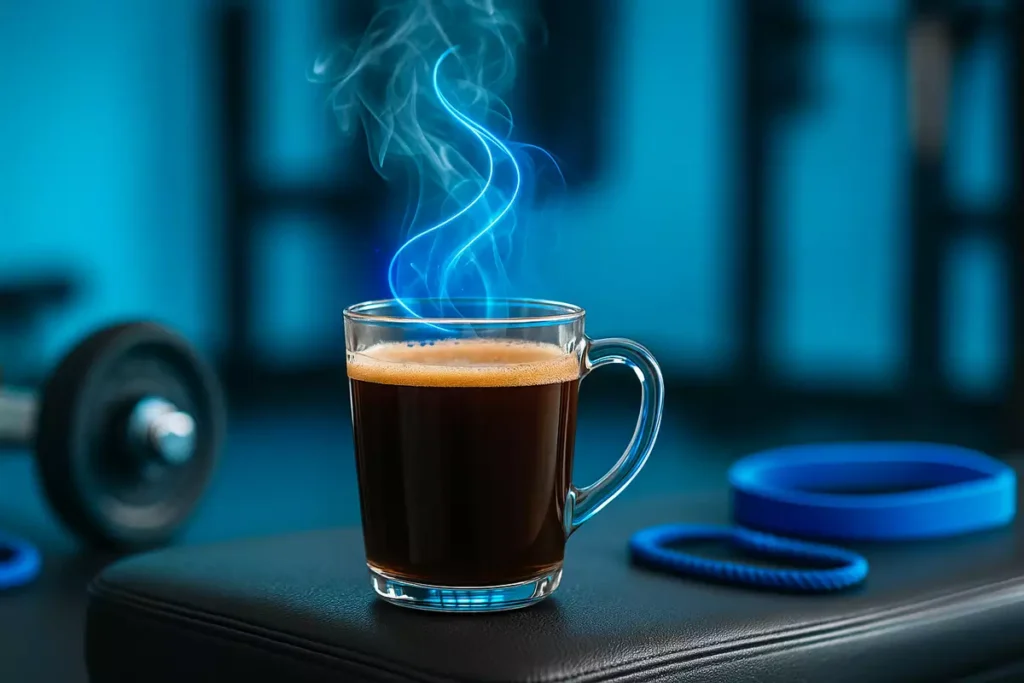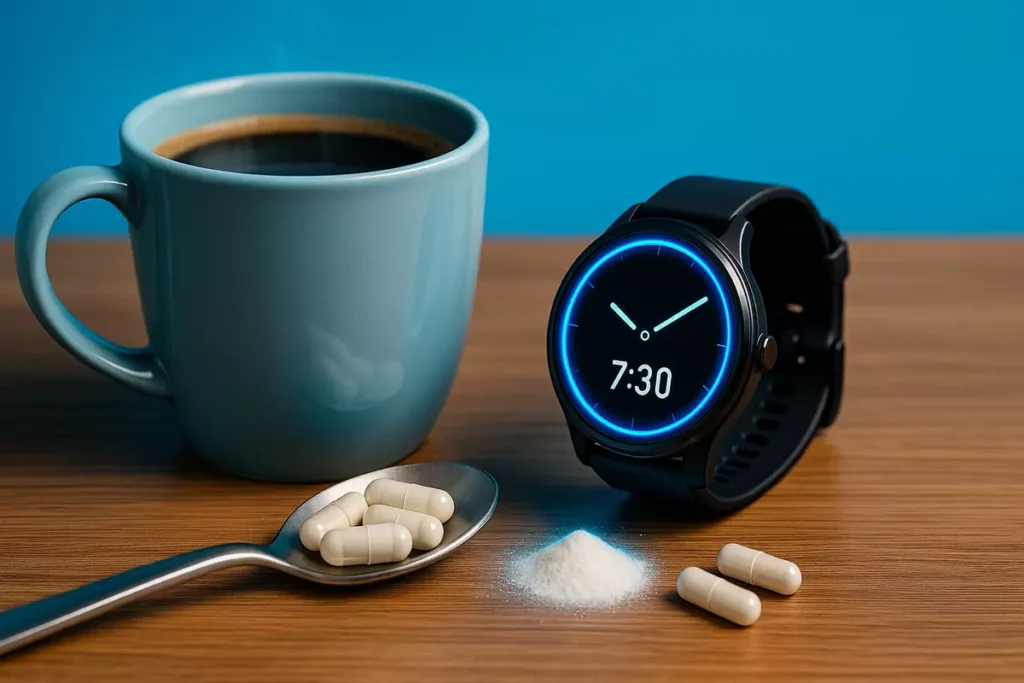Want to burn more fat and rev up your metabolism without adding hours of cardio? Caffeine might be your secret weapon.
Backed by science and proven in real-world results, caffeine can increase calorie burn, boost fat oxidation, and power up your workouts.
Used strategically, it’s more than just a morning pick-me-up—it’s a performance enhancer and fat-loss ally you can start using today.
Table of contents
Quick Answer
If you’re looking for a simple, proven way to give your metabolism a boost and help your body burn more fat, caffeine is one of the most effective tools you can use.
It’s not magic—but when used strategically, it can increase calorie burn, enhance fat oxidation, and give you the energy to push harder in your workouts.
I’ve used caffeine for years—both personally and with my clients—to improve training performance and fat loss results. The difference is real, and in this article, I’ll share both the science and my real-world experiences so you can apply it effectively.
The Science Behind Caffeine’s Metabolic Boost

Caffeine stimulates your central nervous system, which increases energy expenditure and thermogenesis (your body’s heat production). This means your body burns more calories even at rest.
Research shows caffeine can raise metabolic rate by 3–11% for several hours after consumption. This effect is one reason it’s a common ingredient in many fat-burning supplements.
Personally, I notice this “metabolic spark” most during cutting phases. On days I have my pre-workout coffee, I’m more alert, more active throughout the day, and less likely to feel sluggish when calories are low.
You can also learn how caffeine works differently for strength vs. endurance training in this detailed guide.
Caffeine and Fat Oxidation
One of caffeine’s biggest benefits is its ability to help your body use fat as a fuel source. It does this by increasing adrenaline levels and breaking down stored fat into free fatty acids, which your muscles can burn for energy.
For example, one of my clients, Mark from Australia, started using 150 mg of caffeine before his fasted morning cardio. Over eight weeks, his body fat dropped from 18% to 14%—and he reported feeling more focused during workouts.
I’ve experienced this myself. When I drink a black coffee before a strength session, I feel my endurance improve, and my muscles seem to “tap into” fat stores more efficiently.
If you’re curious about combining caffeine with other performance boosters, check out my beta-alanine, creatine, and caffeine stack guide.
Best Timing and Dosage

From my experience, 200 mg of caffeine about 30–40 minutes before training is the sweet spot for boosting performance and fat oxidation without feeling overstimulated.
I’ve experimented with higher amounts like 300 mg, but honestly, I didn’t see better fat-burning results—just more restlessness. If you’re new, start with 100 mg and increase gradually based on how your body responds.
Avoid taking caffeine late in the day. In my early years, I made the mistake of drinking strong coffee at 5 PM, and it wrecked my sleep. Now, I stick to having it before 2 PM.
If you sometimes train in the evening, here’s how caffeine timing affects sleep and performance: Caffeine & Evening Workouts.
You can also learn whether to take caffeine on an empty stomach or with food in this article.
Best Sources of Caffeine
Natural sources like black coffee, espresso, matcha, and green tea are my go-to because they also deliver antioxidants.
During more aggressive fat-loss phases, I sometimes use caffeine capsules for a precise dosage.
One client, Aisha from the UK, swapped her 300-calorie latte for a zero-calorie black coffee. Without changing anything else in her diet, she lost 3 kg in two months.
If you want to control appetite while cutting calories, caffeine can be a game-changer—read more in Caffeine for Appetite Control.
Potential Side Effects and Safety Tips

Too much caffeine can lead to anxiety, jitters, rapid heartbeat, or sleep disruption.
I’ve seen this firsthand—David from Spain went straight to 300 mg as a beginner and ended up shaky and uncomfortable. We scaled him back to 125 mg, and he got the energy without the side effects.
Hydration is also key. Caffeine is mildly diuretic, so drink enough water to stay balanced.
For better focus without the crash, I sometimes recommend pairing it with L-theanine—explained in my Caffeine & L-Theanine Focus Guide.
You might also be interested in how caffeine interacts with hormones—see my breakdown on Caffeine & Testosterone.
Final Takeaway
Caffeine is a powerful, research-backed way to increase metabolism and support fat oxidation—but only if you use it strategically.
Start small, choose the right source for you, time it before your workouts, and avoid late-day doses. Combine it with proper nutrition and training, and you’ll see real results—just like I have, and like my clients have around the world.
When used with intention, caffeine isn’t just a morning pick-me-up—it’s a fat-burning ally that can help you push past plateaus and feel more energized every step of the way.



Leave a Reply